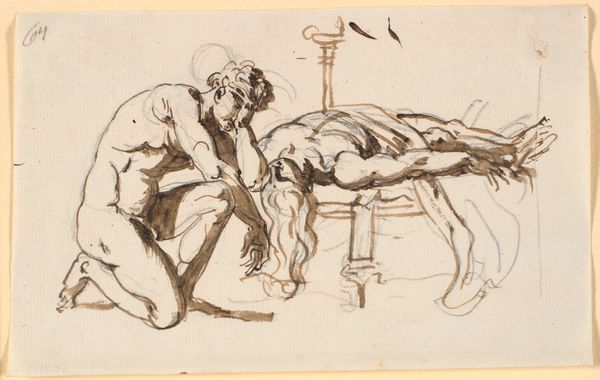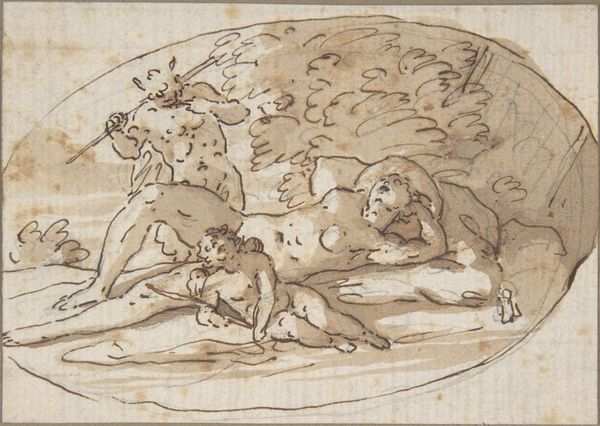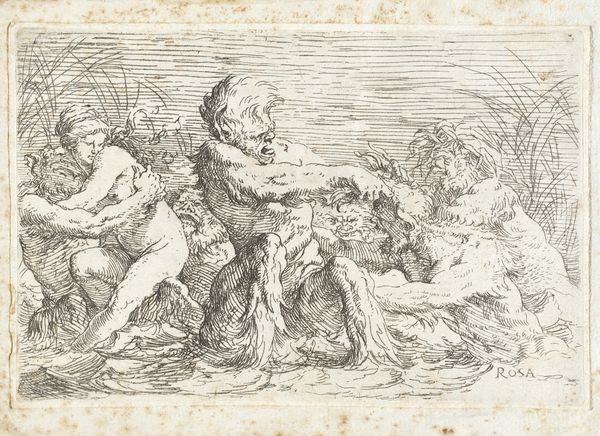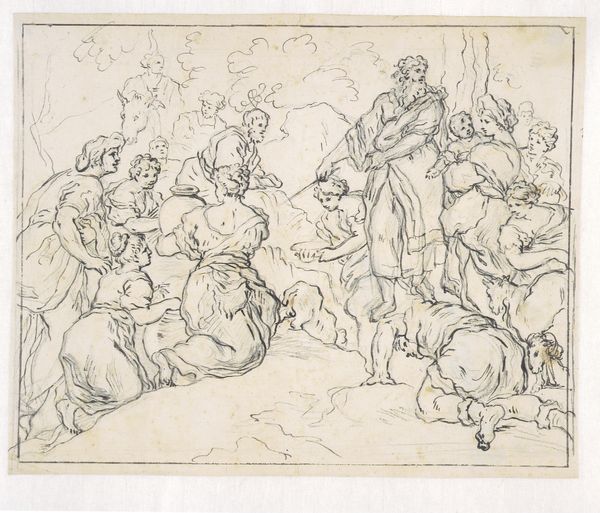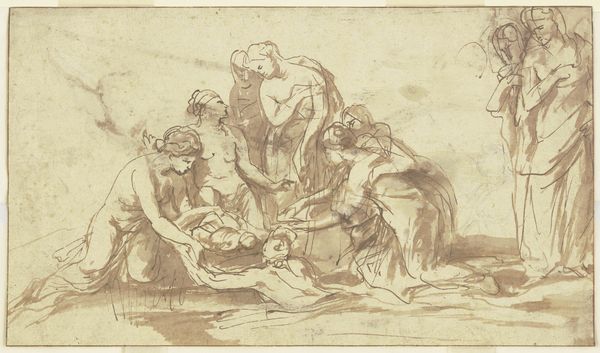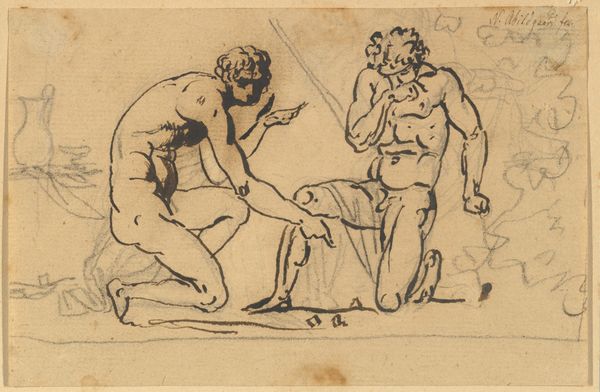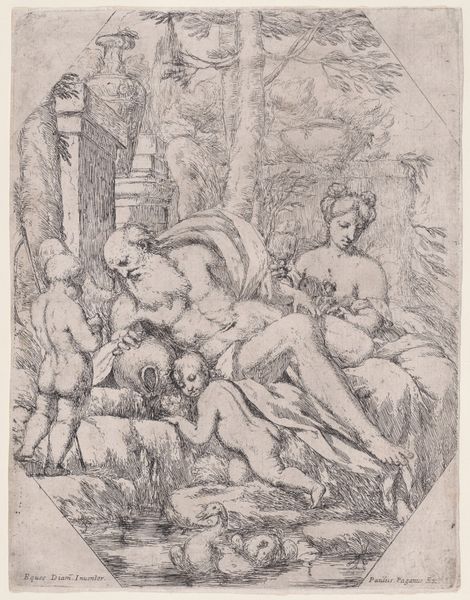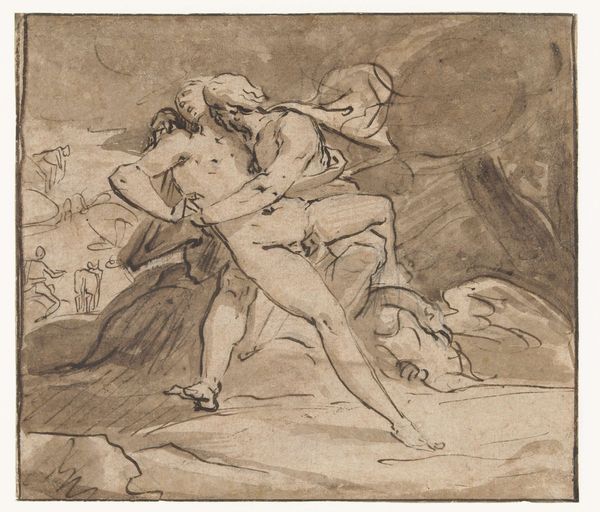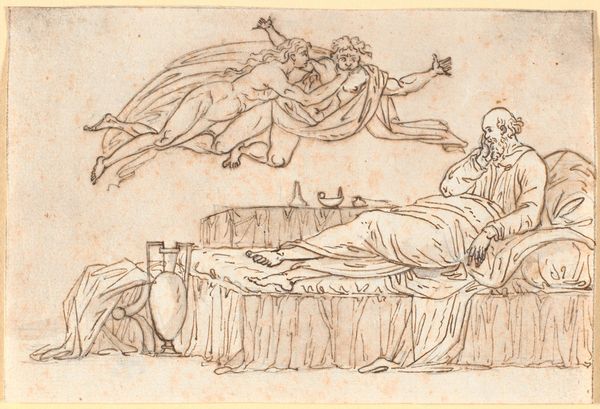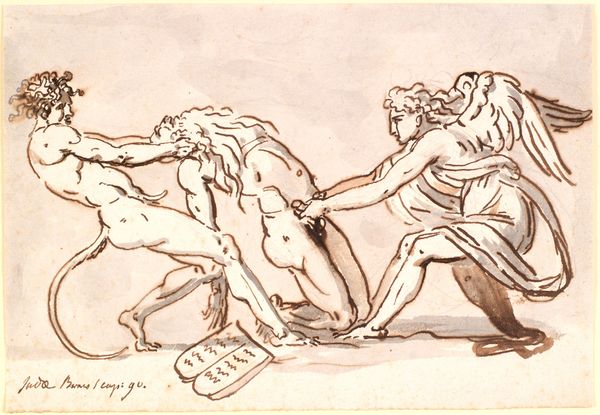
drawing, ink
#
drawing
#
ink painting
#
landscape
#
figuration
#
11_renaissance
#
ink
#
history-painting
#
watercolor
Dimensions: 130 mm (height) x 204 mm (width) (bladmaal)
Curator: This is Nicolai Abildgaard's ink drawing, "Hyrden Faustulus finder Romulus og Remus," created between 1743 and 1809. The work is currently held in the collection of the SMK, the National Gallery of Denmark. Editor: My initial impression is a dusty sepia dream. The scene unfolds in strokes that feel both urgent and ethereal. A sort of rustic noir... what do you make of the dramatic setting? Curator: It presents a cornerstone of Roman identity. Abildgaard portrays Faustulus discovering the infants Romulus and Remus. We can contextualize it within the political function of history painting. Consider the potency of origin myths in forging national identity, and how art was a visual language through which states communicated. Editor: Ah, yes, Rome's 'once upon a time' tale— abandonment, survival, destiny. It does have this monumental air despite the humbleness of its rendering. The almost translucent figures seem both vulnerable and powerful. Did Abildgaard mean to play with these inherent tensions, you think? Curator: Abildgaard certainly knew the rhetorical power of images. Notice how the reclining figure is ennobled, while Faustulus assumes an active, heroic posture, securing the future founders of Rome. We must also reflect on how such classical themes functioned within the cultural and intellectual climate of 18th-century Europe. Editor: It’s compelling how the spare application of ink lets the narrative breathe. It doesn’t dictate emotion; instead, we’re left with this haunting spaciousness that allows us to project our own interpretations into that legendary beginning. It's beautiful, actually. Curator: Indeed. By engaging with such foundational narratives, artists like Abildgaard helped to cultivate a sense of shared European history and identity. A visual articulation of power through mythology. Editor: Power forged in a river, nourished by wolves, imagined in sepia tones. Thanks for drawing me deeper into that past. Curator: The pleasure was all mine. It's a pertinent example of history translated into image.
Comments
No comments
Be the first to comment and join the conversation on the ultimate creative platform.
